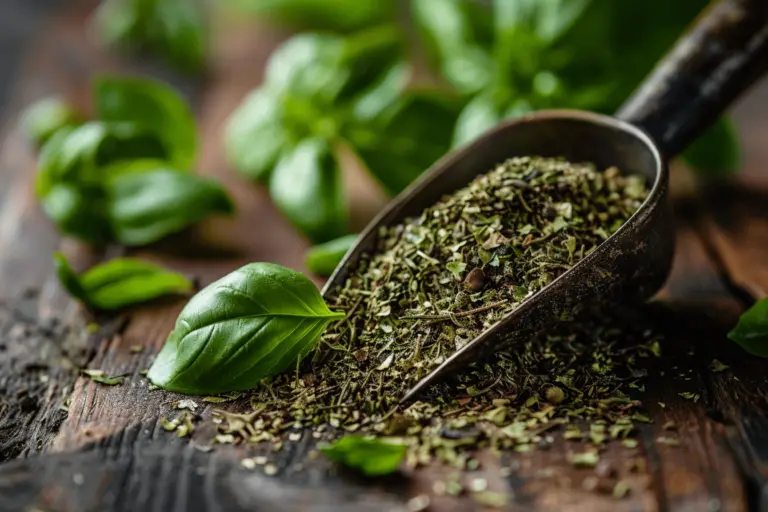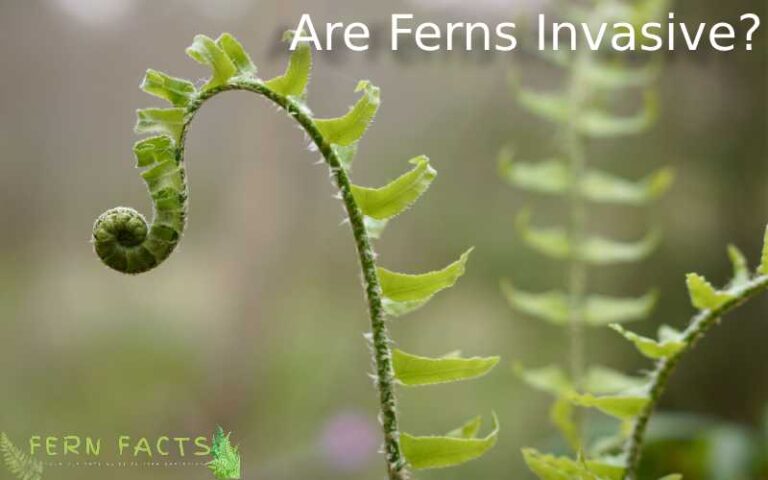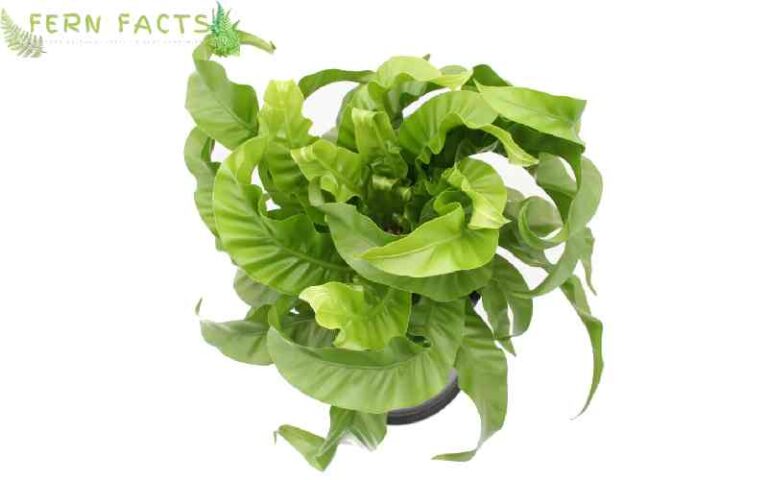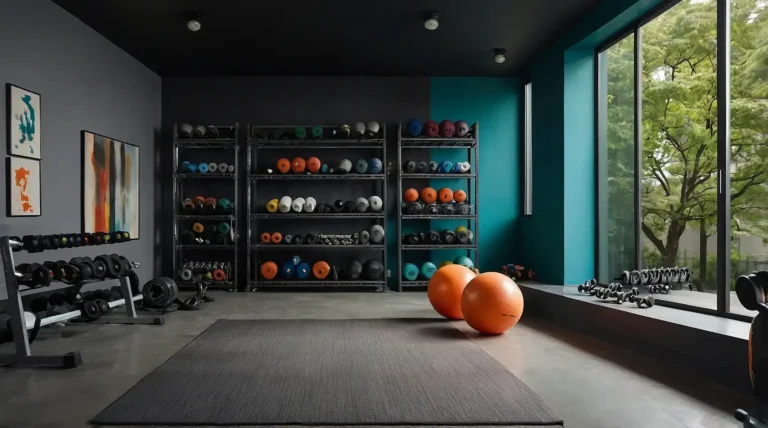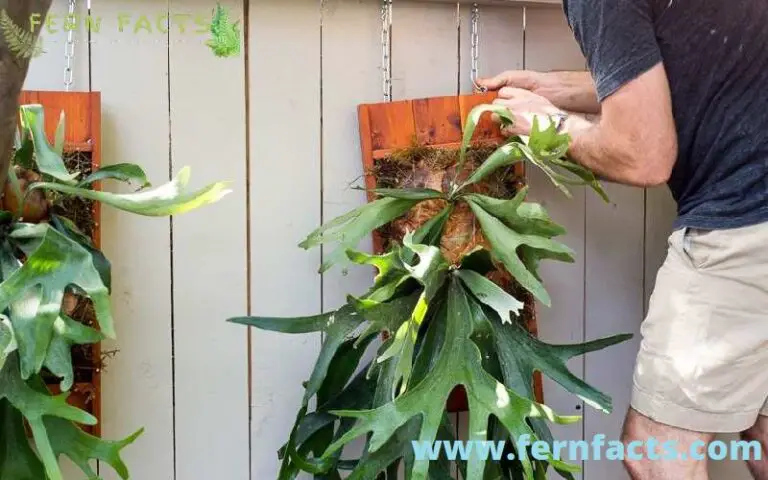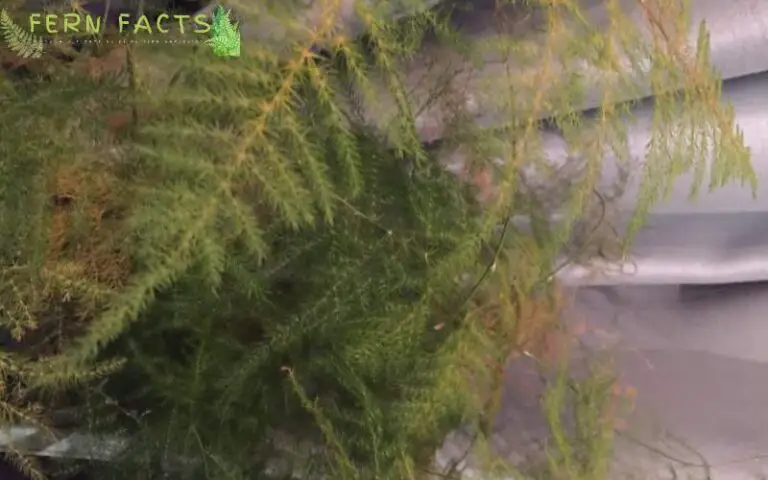How To Create A Natural Swimming Pond: A DIY Oasis Guide
Plan the design and excavate the area to create a natural swimming pond. Install a liner and establish filtration zones.
A natural swimming pond combines beauty and functionality. It offers a sustainable swimming option without chemicals.
Planning is crucial to ensure the pond fits your landscape and meets your needs. Start with a detailed design that outlines the swimming area and regeneration zones.
Excavation should follow the planned design, maintaining depth and shape. Use a high-quality liner to retain water and create an effective barrier.
Introduce aquatic plants to filter and clean the water in the regeneration zone naturally. Circulation pumps help maintain water quality by moving water through filtration zones.
With proper planning and execution, you can enjoy a chemical-free, eco-friendly swimming experience.

1. Choosing The Right Location
Creating a natural swimming pond can transform your backyard into a serene oasis. The first step is choosing the right location.
This decision will impact the pond’s functionality and aesthetics. Let’s explore the key factors to consider.
Assessing The Landscape
Start by assessing the landscape where you plan to build your natural swimming pond. Understand the topography and natural features of your land.

Consider the following:
- Elevation – Ensure the area is not prone to flooding.
- Existing vegetation – Identify trees and plants that might affect the pond’s construction.
- Natural water sources – Check for nearby rivers or streams.
Using a detailed topographical map can help. This map will show the slopes and elevations on your property. Here’s a simple way to assess your landscape:
| Aspect | Considerations |
|---|---|
| Elevation | Higher areas prevent flooding. |
| Vegetation | Large trees may need removal. |
| Water Sources | Nearby streams may feed the pond. |
Thoroughly assess these factors to ensure a good start for your natural swimming pool.
Considering Sunlight And Shade
Next, think about the sunlight and shade in the chosen area. Both elements are crucial for maintaining a healthy pond ecosystem.
Here’s why:
- Sunlight – Essential for aquatic plants to thrive.
- Shade – Prevents excessive algae growth.
Ideally, the pond should receive a balance of both. Too much sunlight can lead to algae overgrowth, making maintenance harder. Conversely, too much shade can stunt plant growth.
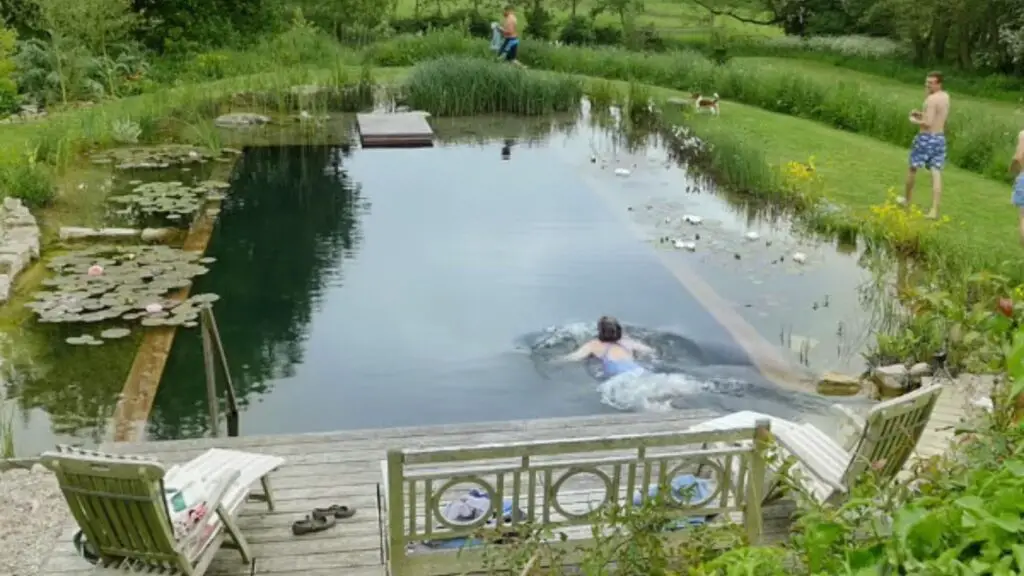
Observe the area at different times of the day. Note the sun’s path and how it affects the spot. You might need to trim trees or add shade structures. Consider the following:
| Time of Day | Sunlight/Shade |
|---|---|
| Morning | Partial sunlight |
| Afternoon | Full sunlight |
| Evening | Partial shade |
Understanding the sunlight and shade dynamics can create a balanced environment for your natural swimming pool.
Evaluating Soil And Drainage
Lastly, evaluating soil and drainage is vital. The soil type will affect the pond’s construction and water retention.
Consider these factors:
- Soil Type – Sandy soil drains quickly, while clay retains water.
- Drainage – Proper drainage prevents waterlogging.
Conduct a soil test to determine its composition. This test will help you understand if additional liners or amendments are needed. Here’s a simple way to evaluate:
| Soil Type | Characteristics |
|---|---|
| Sandy | Retains water, which is good for ponds. |
| Clay | Retains water, good for ponds. |
| Loamy | Balanced drainage, ideal for ponds. |
Proper drainage is equally important. Ensure the area has a natural slope for water runoff. You might need to install drainage systems to manage excess water.
By evaluating these aspects, you can ensure your natural swimming pool functions well.

2. Designing The Pond
Creating a natural swimming pond is a rewarding project that combines the beauty of nature with the enjoyment of swimming.
Designing the pond is the second crucial step, where you’ll need to make important decisions about size, shape, water circulation, and planting zones.
This part of the process sets the foundation for a functional and aesthetic pond.
Determining Size And Shape
Deciding on the size and shape of your swimming pond is the first step in the design phase. The size of the pond will depend on the available space in your yard and your budget.
Larger ponds provide more swimming space but require more maintenance.
Consider these factors:
- Yard Space: Ensure enough room for the pond and surrounding landscaping.
- Budget: Larger ponds cost more to build and maintain.
- Family Needs: Think about how many people will use the pond.
- Aesthetic Preferences: Choose a shape that complements your yard’s design.
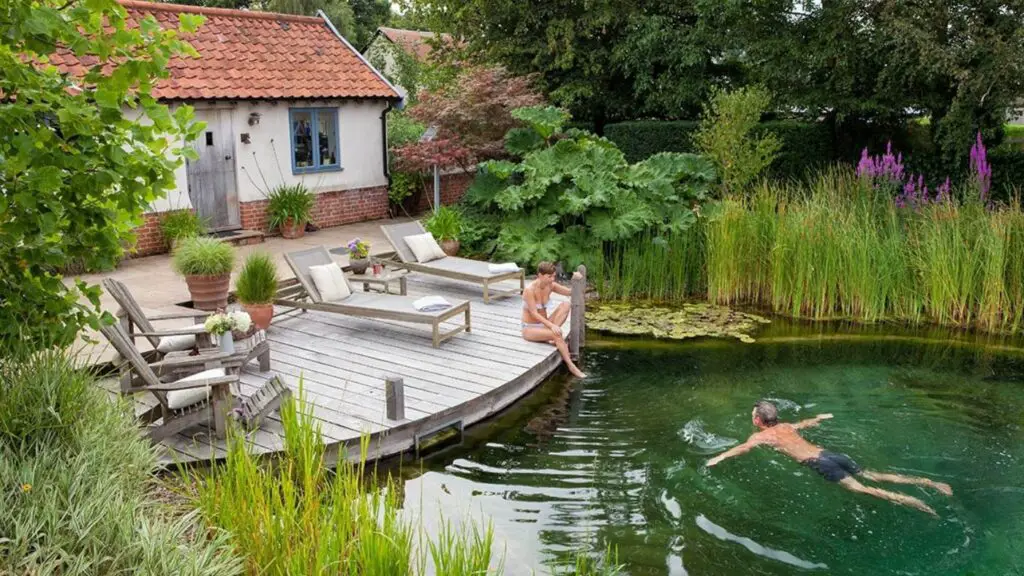
Common shapes include:
| Shape | Characteristics |
|---|---|
| Oval | Natural look, easy to integrate with landscaping |
| Rectangular | Modern, clean lines, easier to construct |
| Freeform | Unique, blends well with natural surroundings |
Remember, the pond should be deep enough for swimming but shallow enough for safety and easy maintenance.
Planning Water Circulation
Water circulation is vital for keeping your pond clean and healthy. Proper circulation helps prevent stagnant water, which can lead to algae growth.
A well-designed system ensures that water moves continuously, mimicking natural water bodies.
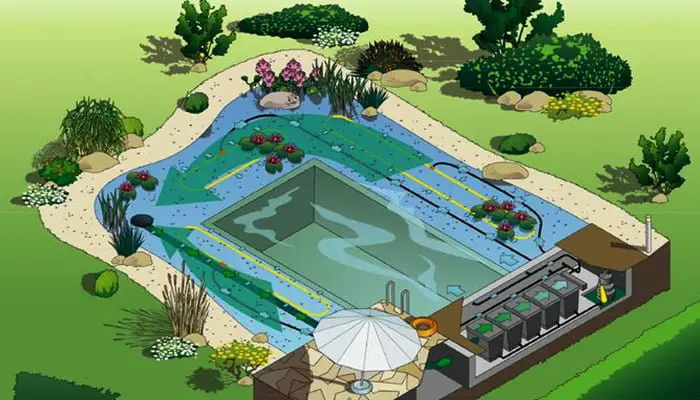
Key elements to consider:
- Pumps: Choose a pump that suits the size of your pond. It should circulate all the water at least once per hour.
- Filters: Install biological filters to remove debris and purify the water naturally.
- Waterfalls or Streams: Adding these features can enhance circulation and provide oxygenation.
The placement of the pump is critical. It should be in a location where it can efficiently draw water from the pond and pass it through the filter.
Consider installing skimmers to remove leaves and debris from the surface.
Energy efficiency is also a factor. Opt for energy-efficient pumps and consider using solar-powered options to reduce your environmental footprint.
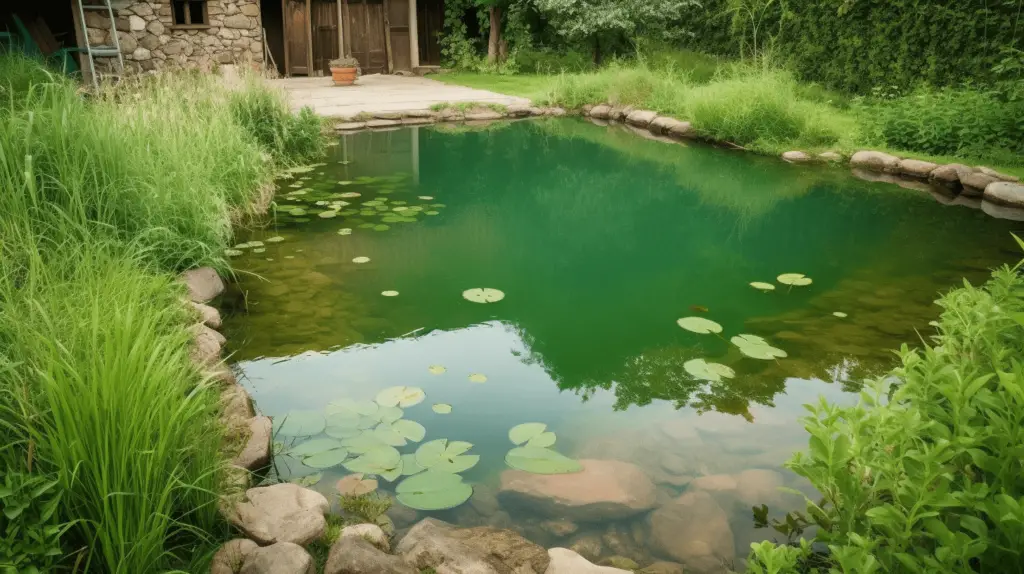
Incorporating Planting Zones
Planting zones are essential for maintaining the ecological balance of your pond. Different plants thrive at different depths, and each type plays a role in keeping the water clean and healthy.
Planning these zones carefully will enhance your pond’s beauty and functionality.
- Marginal Zone: Plants in this zone are at the pond’s edge. They help stabilize the banks and filter runoff.
- Shallow Water Zone: These plants grow in shallow water, up to 6 inches deep. They provide a habitat for wildlife and absorb nutrients.
- Deep Water Zone: Plants in this area are submerged. They oxygenate the water and provide shade.
| Zone | Plants |
|---|---|
| Marginal | Cattails, Iris, Pickerelweed |
| Shallow Water | Water Lilies, Lotus, Arrowhead |
| Deep Water | Hornwort, Waterweed, Submerged Grasses |
Remember, choosing native plants can make maintenance easier and support local wildlife. Group plants must create a balanced and attractive pond ecosystem based on their water depth.
3. Excavation And Construction
Creating a natural swimming pond involves several steps, with the excavation and construction phase being one of the most crucial.
This stage transforms your vision into a tangible, functional water feature. Follow these steps to ensure your pond is both beautiful and sustainable.
3.1 Marking The Pond Area
Begin by marking the pond area accurately to avoid any miscalculations. Use spray paint or wooden stakes and string to outline the shape and size of the pond.
Ensure you include both the swimming zone and the regeneration zone.
Consider the following steps:
- Measure the length and width of the pond area.
- Mark the boundaries with stakes and string.
- Use spray paint to outline the exact shape.
- Double-check measurements to ensure accuracy.
Proper marking ensures a clear excavation plan, reducing errors and saving time.
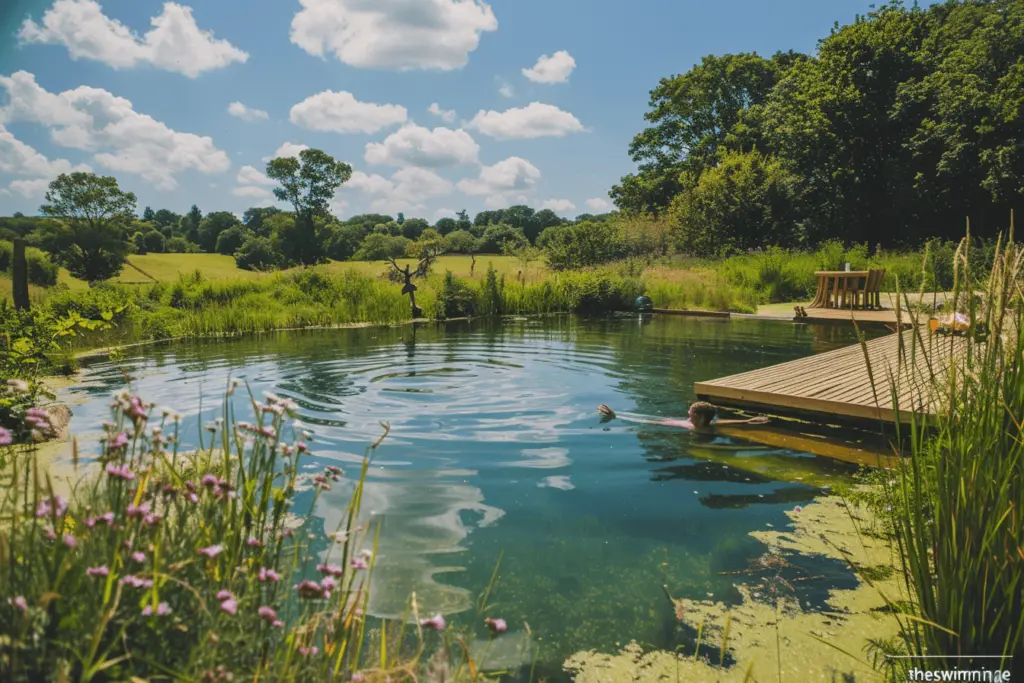
3.2 Digging The Pond
Next, start digging the pond. Depending on the size, you might need a mini-excavator or do it manually with shovels.
Ensure the depth varies across the pond to create different zones for plants and swimmers.
Follow these steps:
- Excavate the swimming zone to a depth of at least 6 feet.
- Dig the regeneration zone to a depth of 1-2 feet.
- Ensure gentle slopes between zones to allow easy movement.
- Remove rocks and debris from the pond bed.
A well-dug pond ensures proper water flow and habitat for aquatic life.
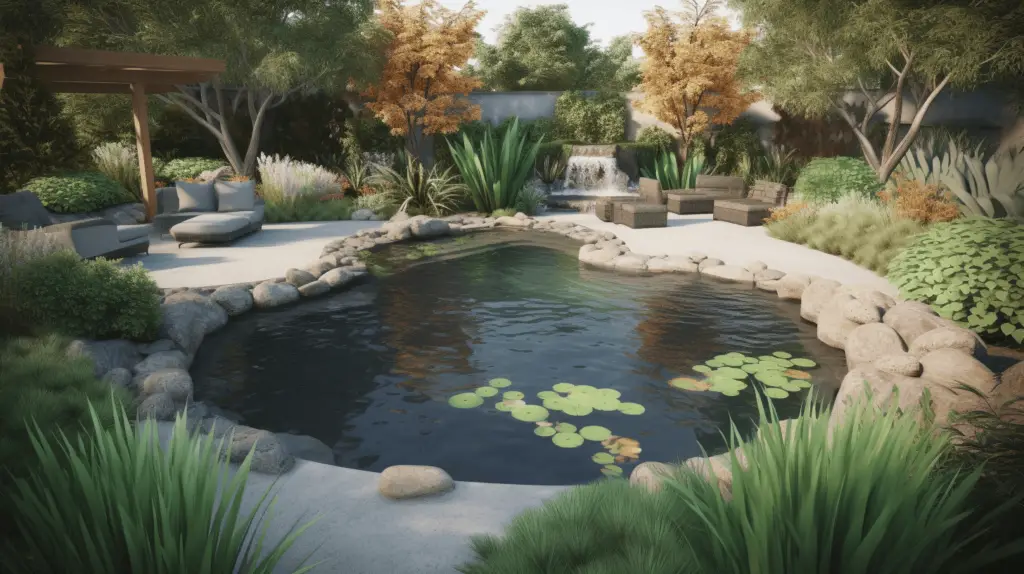
3.3 Building The Retaining Walls
After digging, focus on building the retaining walls to support the pond’s structure.
Use natural rocks or pre-cast concrete blocks for a sturdy and aesthetic design.
Steps to build retaining walls:
- Lay the first layer of rocks or blocks at the bottom edge.
- Stack subsequent layers, ensuring each is level.
- Use gravel or soil to fill gaps and stabilize the structure.
- Install a drainage pipe if needed to prevent water buildup.
Strong retaining walls prevent erosion and maintain the pond’s shape.
3.4 Installing The Pond Liner
The final step is installing the pond liner. This layer ensures the pond holds water effectively.
Use a high-quality, flexible liner for best results.
Steps to install the liner:
- Measure and cut the liner to fit the pond dimensions.
- Lay the liner evenly, avoiding wrinkles.
- Secure the edges with rocks or soil to hold it in place.
- Fill the pond gradually to check for any adjustments needed.
A properly installed liner ensures the longevity and functionality of your natural swimming pond.
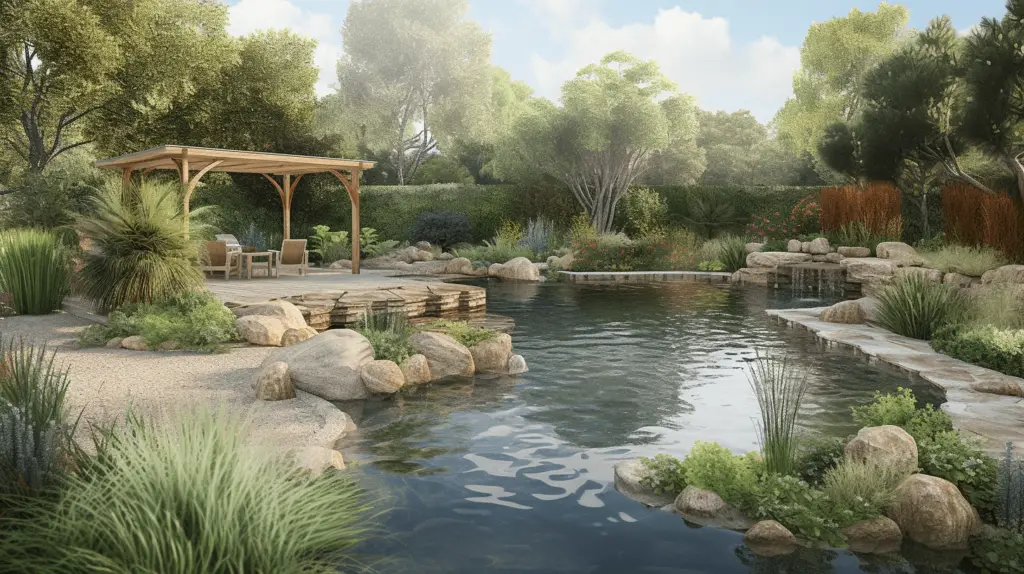
4. Creating The Filtration System
Creating a natural swimming pond is a wonderful way to blend beauty and function in your backyard. A key component of any successful pond is the filtration system.
The right filtration ensures clean, clear, and healthy water, making your pond a delightful spot for a refreshing dip.
Let’s dive into the steps involved in creating an effective filtration system.
4.1 Installing The Skimmer And Pump
Installing the skimmer and pump is the first step in setting up your filtration system. The skimmer removes debris like leaves and twigs from the water’s surface.
It keeps your pond looking clean and prevents blockages in the pump and biofilter.
Follow these steps to install the skimmer and pump:
- Choose the right location: Place the skimmer where the wind naturally pushes debris. This ensures maximum efficiency.
- Dig a hole: Dig a hole for the skimmer at the pond’s edge. Ensure it’s level with the pond’s waterline.
- Install the skimmer: Position the skimmer in the hole and secure it in place with soil. Attach the skimmer lid.
- Connect the pump: Attach the pump to the skimmer using the provided fittings. Ensure all connections are tight to prevent leaks.
The pump draws water through the skimmer, removing debris and circulating it through the biofilter, ensuring clean water.

4.2 Building The Biofilter
The biofilter is essential for maintaining water quality. It uses beneficial bacteria to break down organic matter and harmful substances.
To build an effective biofilter, follow these steps:
- Choose a container: Select a sturdy container that can hold the biofilter media. A large plastic bin works well.
- Add filter media: Fill the container with biofilter media like lava rock, bio balls, or ceramic rings. These provide surfaces for beneficial bacteria to grow.
- Install the inlet and outlet: Drill holes for the inlet and outlet pipes. Attach pipes securely to ensure water flows through the filter media.
- Connect the pump: Connect the pump’s outflow to the biofilter’s inlet. Water flows through the filter media, where bacteria break down impurities.
This system keeps the water clear and healthy, creating a balanced ecosystem for your natural swimming pond.
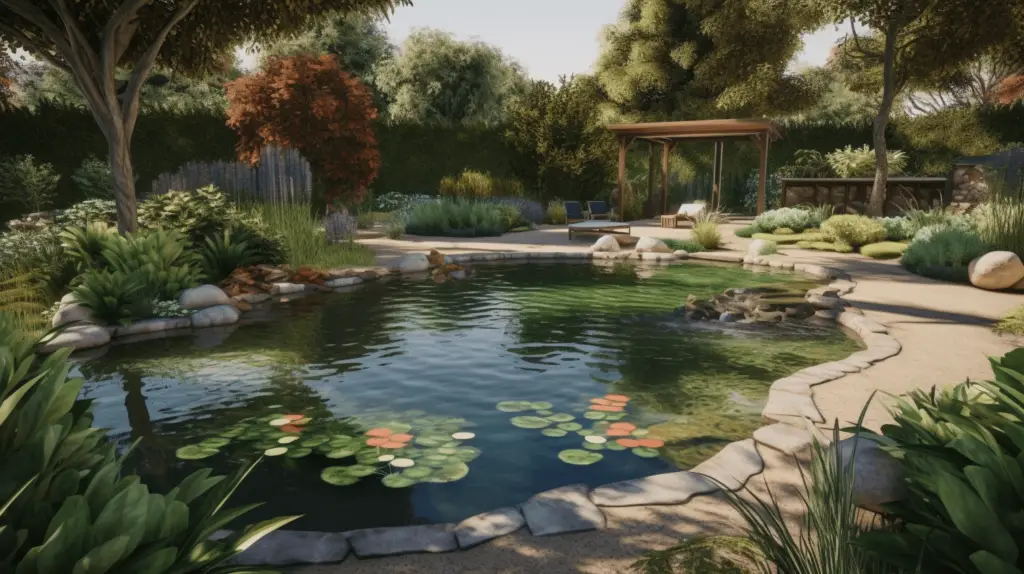
4.3 Adding Gravel And Plants
Adding gravel and plants to your pond enhances filtration and adds beauty. Gravel acts as a mechanical filter, trapping debris, while plants absorb nutrients and provide oxygen.
Follow these steps for the best results:
- Choose the right gravel: Use pea gravel or small river stones. These provide surfaces for beneficial bacteria to grow.
- Layer the gravel: Spread a 2-3 inch layer of gravel at the bottom of the pond. Ensure even coverage.
- Select aquatic plants: Choose plants like water lilies, cattails, and reeds. These thrive in water and provide natural filtration.
- Plant the aquatic plants: Place plants in the gravel. Ensure roots are covered, but leave the crown of the plant exposed.
Gravel and plants work together to maintain a clean and healthy pond. They create a natural, beautiful environment that enhances your swimming experience.
5. Filling And Balancing The Water
Creating a natural swimming pond brings a slice of paradise to your backyard. One crucial step is filling and balancing the water.
This step ensures your pond stays clean, clear, and healthy for swimmers and wildlife alike.
The process involves filling the pond, testing and adjusting the water chemistry, and adding beneficial bacteria.
5.1 Filling The Pond
Filling your natural swimming pond is a straightforward but vital task. Use clean, fresh water to fill the pond.
Avoid using water from questionable sources as it may contain contaminants.
Here are some steps to follow:
- Start by using a garden hose to fill the pond slowly.
- Monitor the water level to ensure you don’t overfill.
- Keep an eye on the pond walls, making sure they remain intact.
The best time to fill your pond is during cooler parts of the day. This helps prevent algae growth.
Avoid using pond water from nearby lakes or rivers. They might introduce unwanted organisms or pollutants.
Once the pond is filled, let the water sit for a day or two. This helps settle any sediments.
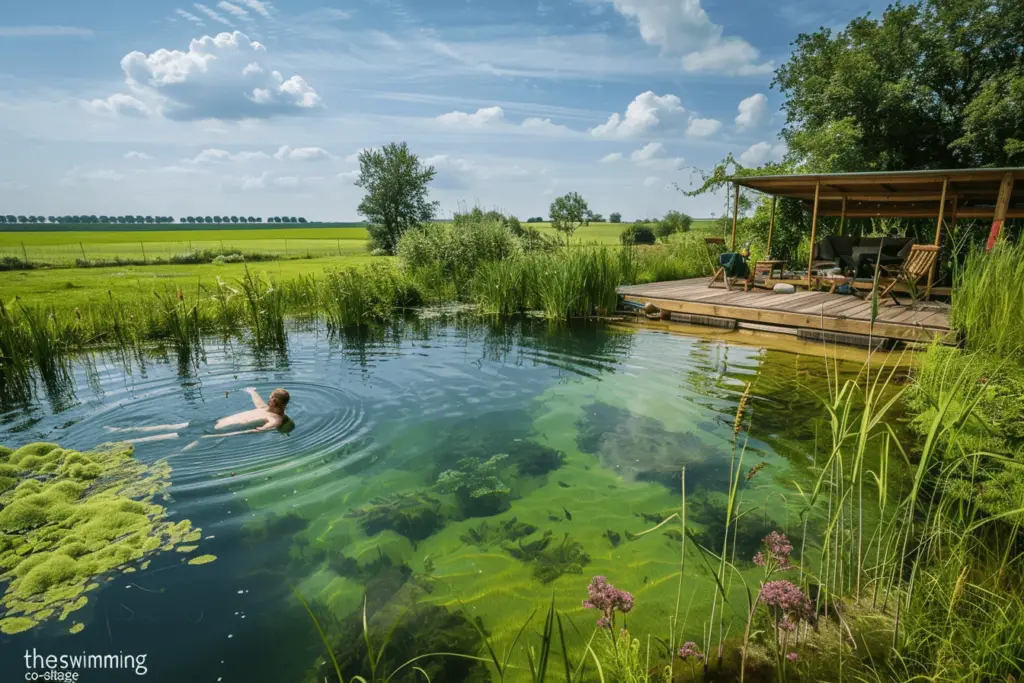
5.2 Testing And Adjusting Water Chemistry
Maintaining the right water chemistry is essential for a natural swimming pond. Use a test kit to measure pH, nitrates, and phosphates.
Here’s a simple table to understand ideal water parameters:
| Parameter | Ideal Range |
|---|---|
| pH | 6.5 – 8.0 |
| Nitrates | < 20 ppm |
| Phosphates | < 0.05 ppm |
Use these steps to test and adjust:
- Collect a water sample using a clean container.
- Follow the test kit instructions to measure each parameter.
- Adjust pH using pH increases or decreases.
- For high nitrates, consider adding aquatic plants.
- Use phosphate removers if levels are high.
Regular testing ensures your pond maintains a healthy balance. Aim to test the water at least once a week.
5.3 Adding Beneficial Bacteria
Adding beneficial bacteria is crucial for a healthy pond ecosystem. These bacteria help break down organic waste and prevent algae growth.
Follow these steps to introduce beneficial bacteria:
- Choose a high-quality bacterial product from a reputable supplier.
- Read the manufacturer’s instructions carefully.
- Add the bacteria to your pond, usually in liquid or granular form.
- Distribute the bacteria evenly across the pond surface.
Beneficial bacteria work best in warm, oxygen-rich water. Ensure your pond has good aeration to support bacterial growth.
Regularly adding bacteria, especially during the warmer months, keeps your pond clear and clean.
These steps ensure your natural swimming pond remains a beautiful and inviting oasis all year round.
6. Adding Aquatic Plants And Wildlife
Creating a natural swimming pond is an exciting project combining beauty and sustainability. One of the key steps in this process is adding aquatic plants and wildlife.
This step is crucial for establishing a thriving ecosystem.
It enhances the aesthetic appeal and contributes to the pond’s health and water quality.
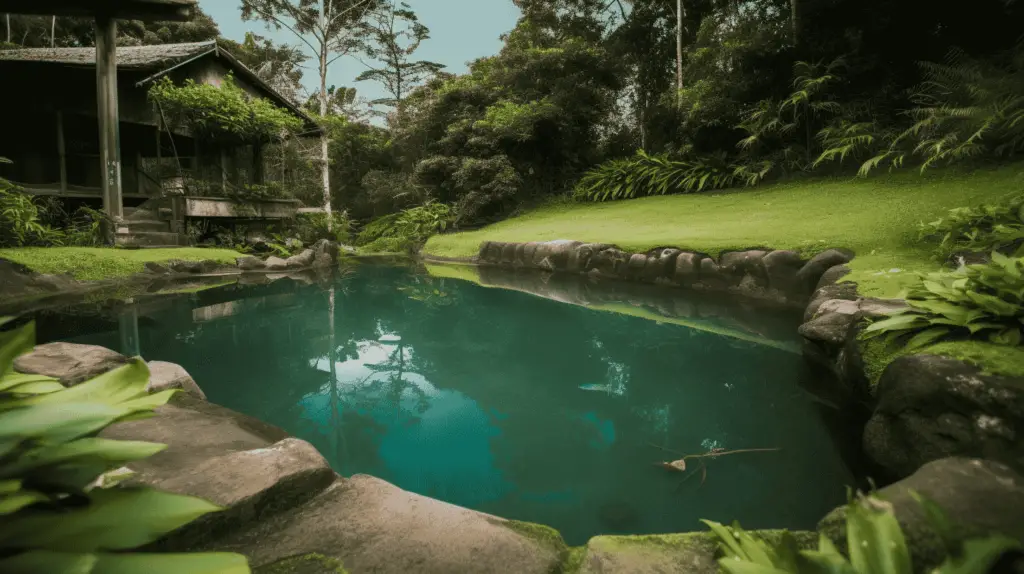
6.1 Selecting Native Aquatic Plants
Choosing the right plants is vital for a healthy, natural swimming pond. Opt for native aquatic plants that are adapted to the local climate and soil.
They require less maintenance and are more likely to thrive.
Here are some popular choices:
- Cattails (Typha spp.): Excellent for filtering water.
- Water Lilies (Nymphaea spp.): Provide shade and reduce algae growth.
- Duckweed (Lemna minor): Helps in oxygenating water.
Consider the following table for more native aquatic plants:
| Plant Name | Benefits |
|---|---|
| Mare’s Tail (Hippuris vulgaris) | Early spring color supports insects |
| Pickerelweed (Pontederia cordata) | Attracts pollinators, provides shelter for fish |
| Marsh Marigold (Caltha palustris) | Early spring color, supports insects |
6.2 Introducing Fish And Wildlife
Adding fish and wildlife to your pond is essential for maintaining a balanced ecosystem.
Fish help control mosquito larvae and other pests, while wildlife like frogs and turtles add to the biodiversity.
Consider these fish species:
- Goldfish: Hardy and easy to care for.
- Koi: Beautiful and helps control algae.
- Bluegill: Good for controlling insects.
Wildlife you might want to introduce:
- Frogs: Great for insect control.
- Turtles: Add a natural touch to the pond.
- Dragonflies: Help control mosquito populations.
6.3 Maintaining A Balanced Ecosystem
To ensure your pond remains healthy, it’s important to maintain a balanced ecosystem.
This involves regular monitoring and care.
Key steps include:
- Regular Water Testing: Check pH, oxygen levels, and nutrient content.
- Pruning Plants: Remove dead or overgrown plants to prevent decay.
- Controlling Algae: Use natural methods like barley straw or beneficial bacteria.
Here’s a simple maintenance schedule:
| Task | Frequency |
|---|---|
| Water Testing | Monthly |
| Pruning Plants | Seasonally |
| Algae Control | As Needed |
By following these steps, your natural swimming pond will thrive, providing a beautiful and sustainable environment for you and local wildlife.
7. Regular Maintenance And Care
Creating a natural swimming pond is a rewarding project that offers a beautiful and eco-friendly alternative to traditional pools. Maintaining its pristine condition requires consistent care.
Regular maintenance and care are needed to ensure your pond remains clean, healthy, and inviting for swimmers and wildlife alike.
7.1 Skimming And Removing Debris
Regularly skimming your pond is essential to keep it free of debris. Floating leaves, twigs, and other organic matter can cloud the water and provide a breeding ground for algae.
Here are some steps to maintain a clean surface:
- Daily Skimming: Use a pond net to remove leaves and other debris from the water’s surface.
- Seasonal Clean-Up: In the fall, ensure you remove fallen leaves promptly to prevent them from sinking and decaying.
- Install a Skimmer: Consider installing a pond skimmer to automate debris removal.
Regular skimming keeps your pond looking beautiful and promotes a healthier environment for aquatic plants and animals.
7.2 Trimming And Pruning Plants
Plants play a crucial role in maintaining the ecological balance of your natural swimming pond.
Regular trimming and pruning are necessary to ensure they do not overgrow and disrupt the pond’s ecosystem.
Follow these tips:
- Regular Pruning: Trim back any overgrown plants to maintain their shape and prevent them from overshadowing other plants.
- Remove Dead Foliage: Cut away any dead or decaying plant matter to prevent it from decomposing into the water.
- Seasonal Maintenance: More thorough pruning is performed in spring and fall to prepare plants for the changing seasons.
Keeping your pond plants well-maintained ensures they contribute positively to the pond’s ecosystem, providing oxygen and habitat for wildlife.
7.3 Cleaning And Maintaining Filters
Filters are vital for maintaining clear and clean water in your natural swimming pond. Regular cleaning and maintenance of filters help to remove unwanted particles and promote a healthy environment.
Here’s how to do it:
- Regular Cleaning: Check and clean your filters weekly to ensure they are not clogged with debris.
- Seasonal Maintenance: Perform a deep clean of all filters at the start and end of the swimming season.
- Replace Filter Media: Change the filter media as the manufacturer recommends to ensure optimal performance.
Properly maintained filters keep your pond water clear, reducing the risk of algae blooms and keeping the pond safe and enjoyable for swimming.
7.4 Monitoring Water Quality
Maintaining optimal water quality is crucial for the health of both swimmers and aquatic life. Regular monitoring helps to detect and address issues before they become serious.
Follow these guidelines:
- Regular Testing: Test the water’s pH, ammonia, nitrate, and phosphate levels weekly.
- Adjusting pH: Use natural products to adjust the pH levels if they are too high or too low.
- Algae Control: Monitor for algae growth and use natural algaecides or introduce algae-eating fish to control it.
Regular water quality checks ensure a safe and pleasant swimming experience and promote a thriving pond ecosystem.
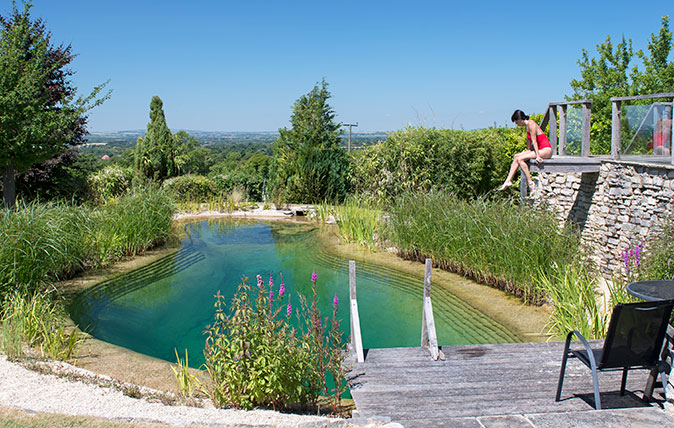
8. Enhancing The Pond Aesthetics
Creating a natural swimming pond is an exciting project combining nature’s beauty with the joy of swimming.
Enhancing the pond’s aesthetics is crucial to make it a serene and inviting space.
This involves adding water features, incorporating lighting, and creating surrounding landscaping to ensure your pond looks stunning and blends seamlessly with its environment.
8.1 Adding Water Features
Water features can transform your natural swimming pond into a breathtaking haven.
Adding water features improves aesthetics and enhances the pond’s ecosystem.
Consider these popular options:
- Waterfalls: Create a cascading waterfall using rocks and stones. The sound of falling water adds a soothing ambiance.
- Fountains: Install a fountain in the center of the pond. It adds a focal point and helps aerate the water.
- Bubblers: Use bubblers at the pond’s edge. They create gentle ripples and add oxygen to the water.
Water features also attract wildlife, such as birds and butterflies, enhancing the pond’s natural charm. Choose features that complement the pond’s size and shape.
Ensure they are energy-efficient and easy to maintain.
8.2 Incorporating Lighting
Lighting is vital in enhancing the pond’s beauty, especially at night. Strategically placed lights can create a magical atmosphere and improve safety.
Consider these lighting options:
- Underwater Lights: Place waterproof lights under the water. They create a mesmerizing glow and highlight the pond’s depth.
- Pathway Lights: Install lights along the paths leading to the pond. They guide visitors and add charm.
- Floating Lights: Use floating solar lights on the pond’s surface. They are eco-friendly and add a whimsical touch.
Use a combination of lighting types for a layered effect. Opt for LED lights as they are energy-efficient and long-lasting. Ensure all electrical components are safe and suitable for outdoor use.
8.3 Creating Surrounding Landscaping
The landscaping around the pond should complement its natural look and enhance the overall appeal.
Thoughtful landscaping creates a seamless transition from pond to garden.
Here are some ideas:
- Native Plants: Use native plants around the pond. They require less maintenance and provide habitat for local wildlife.
- Rock Gardens: Design rock gardens with various stones and pebbles. They add texture and interest.
- Seating Areas: Create seating areas with benches or natural stones. They provide a relaxing spot to enjoy the pond.
- Paths and Walkways: Lay gravel or stone paths leading to the pond. They add structure and guide visitors.
Incorporate a mix of evergreen and flowering plants for year-round interest. Use mulch to retain moisture and reduce weeds.
Ensure the landscaping is low-maintenance and sustainable.
Frequently Asked Questions
Can You Make A Natural Pond Swimmable?
Yes, you can make a natural pond swimmable. Ensure proper filtration, aeration, and regular maintenance. Add beneficial plants and avoid chemical contaminants.
How Much Does It Cost To Build A Natural Swimming Pond?
Building a natural swimming pond can cost between $50,000 and $100,000. Prices vary based on size and design.
Does A Natural Swimming Pond Need A Pump?
A natural swimming pond typically needs a pump to circulate water and maintain a healthy ecosystem.
How Much Space Do You Need For A Natural Swimming Pond?
A natural swimming pond typically requires a minimum of 50 square meters. Larger sizes offer better water quality and biodiversity.
Conclusion
Creating a natural swimming pond offers a serene escape in your backyard. It boosts biodiversity and enhances relaxation.
Follow the steps mentioned, and you’ll soon enjoy a beautiful, eco-friendly haven. Dive into this rewarding project and relish the benefits of a natural swimming pond.
Your oasis awaits.


